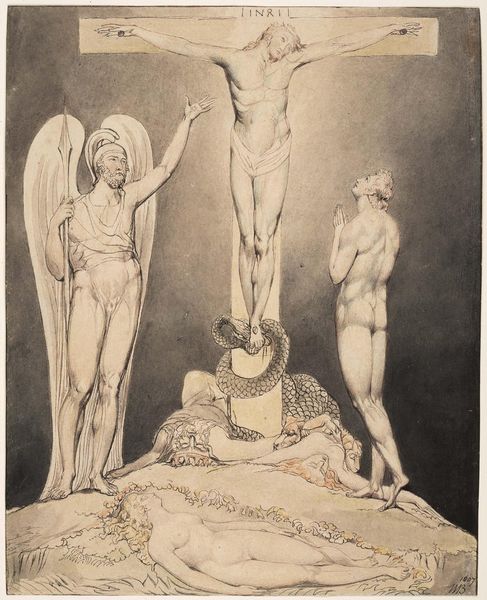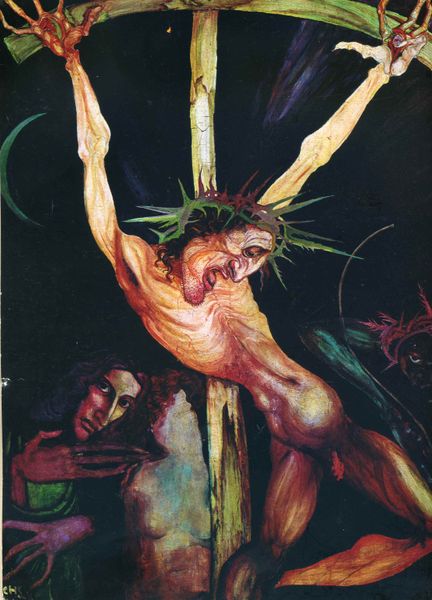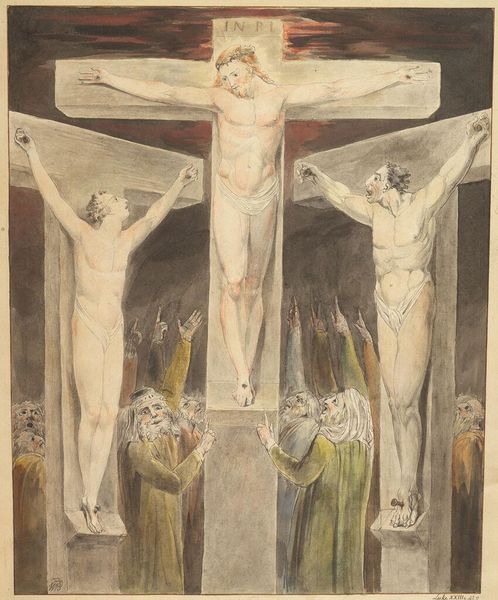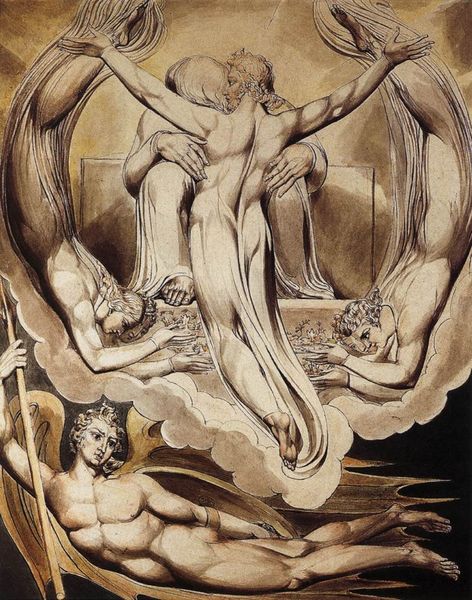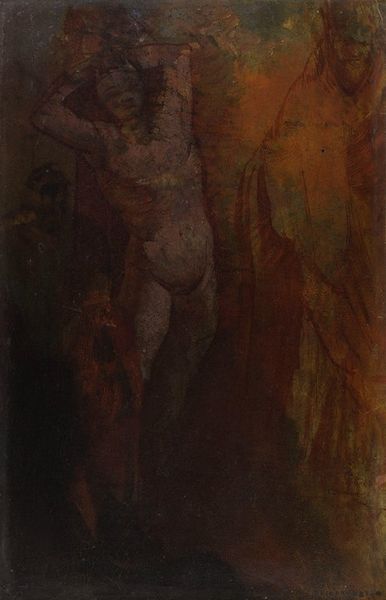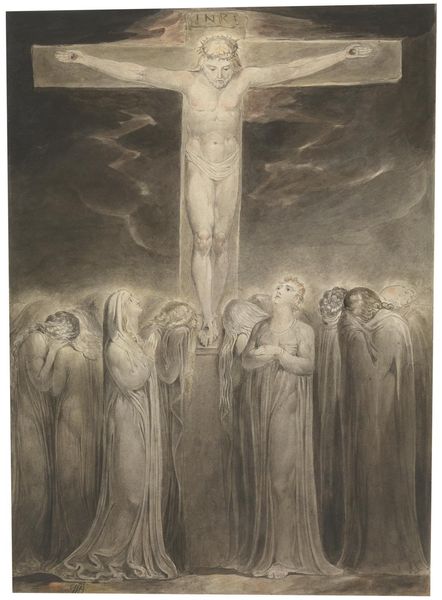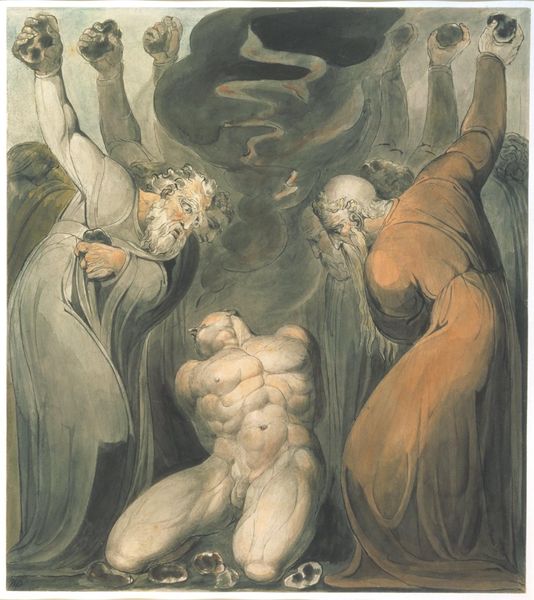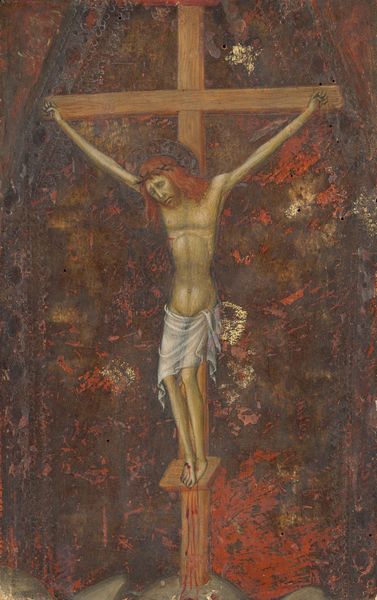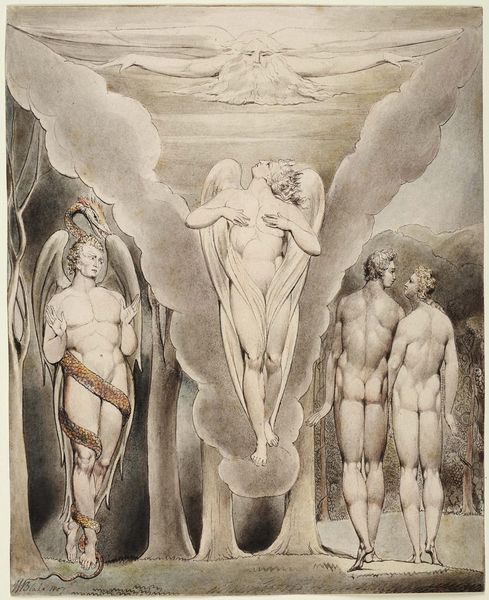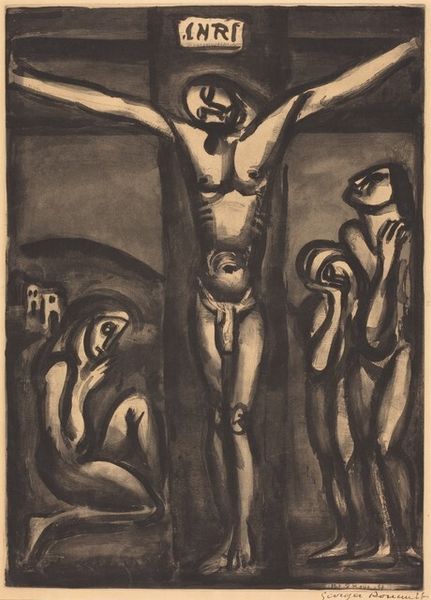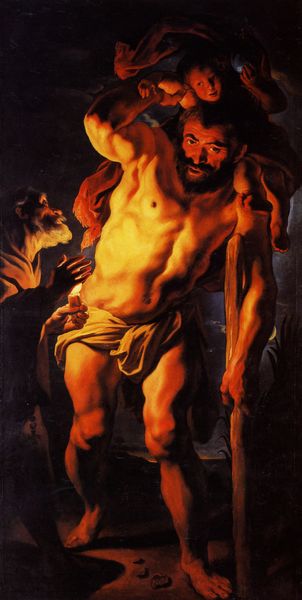
#
gouache
#
abstract painting
#
possibly oil pastel
#
oil painting
#
acrylic on canvas
#
underpainting
#
pastel chalk drawing
#
christianity
#
mythology
#
painting painterly
#
watercolour illustration
#
watercolor
#
christ
Dimensions: 26 x 18 cm
Copyright: Public domain
Editor: This is "The Satanic Calvary," created in 1882 by Félicien Rops, and it appears to be made with pastels, possibly with watercolour underpainting. The red background and stark figures create a jarring, almost violently unsettling feeling. What do you see in this piece that contributes to this? Curator: Immediately, the unsettling feeling arises from the flagrant disregard for conventional religious iconography. Note the harsh lines used to render the figures. Rops employs a stark contrast in colour: the reddish backdrop that envelops the tableau creates a field within which the figures are brought into sharp relief. The artist thus builds a powerful composition via tonal oppositions that highlight themes of irreverence and inversion. Editor: So, it’s the technique and composition themselves creating the impact? Are you saying it’s not about the literal symbolism of inverting the crucifixion scene? Curator: Precisely. The shock derives not merely from the subject matter—a defiled Calvary—but from the calculated manipulation of form. Consider how the elongated bodies, almost caricatured, defy classical ideals of beauty. Also note how the verticality of the composition itself creates a sense of tension. Rops uses form to convey and provoke. Do you observe the interplay between the solid and the void? Editor: Yes, the flickering candle flames cutting through the deep red! They provide a fragile boundary of clarity within this visual landscape. So, is the aesthetic of the piece more significant than the artist's specific intention or the historical context? Curator: In a sense, yes. By isolating the formal elements and analyzing their interplay, we begin to grasp how the artwork generates meaning independent of extrinsic factors. While historical context and artistic intent certainly play a part, close formal reading demonstrates how visual composition embodies subversive meaning. Editor: This formal analysis highlights the powerful visual language and shows the piece to be more than shock value. Thank you! Curator: Indeed, it encourages us to understand how visual mechanics can generate emotive meaning.
Comments
No comments
Be the first to comment and join the conversation on the ultimate creative platform.
